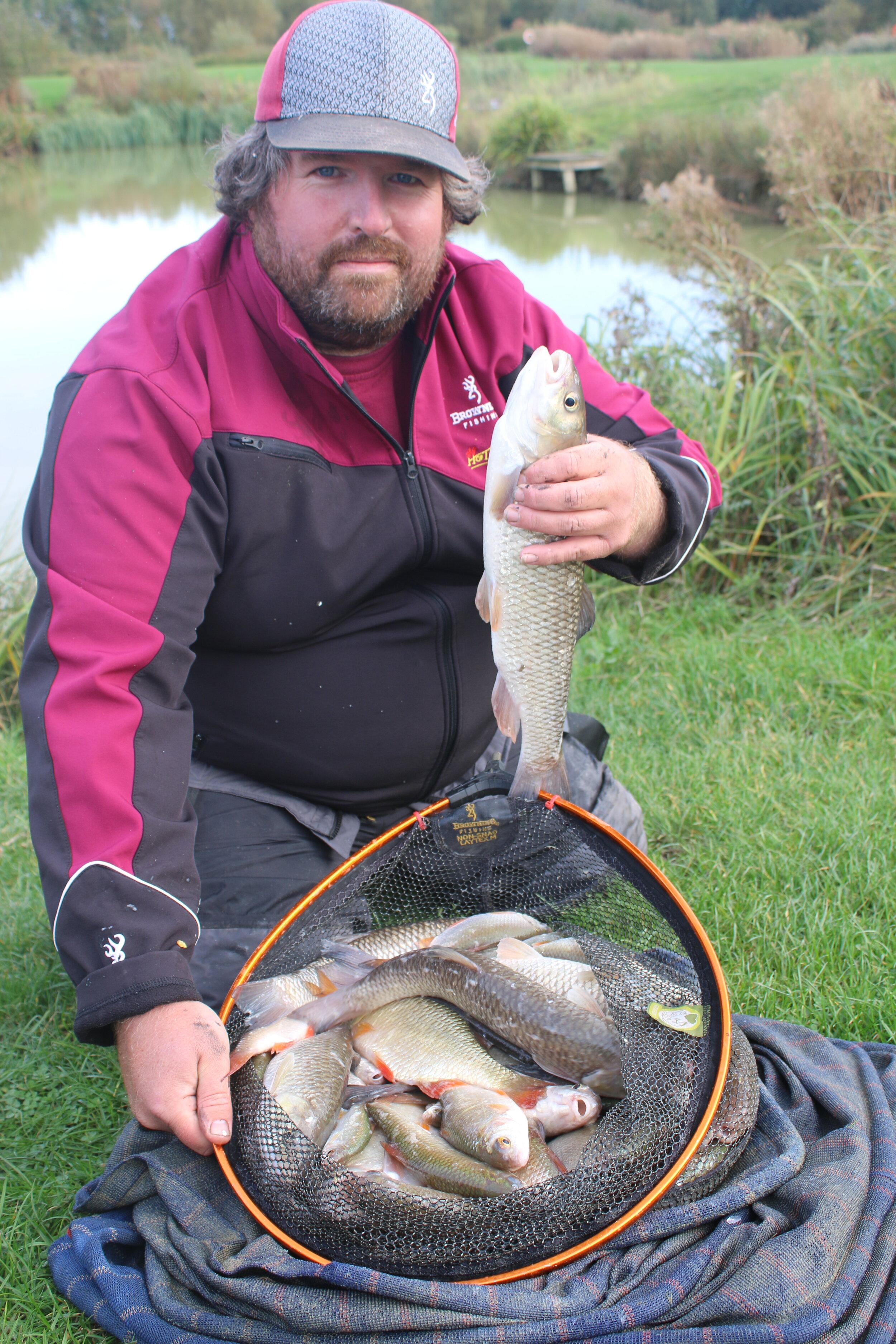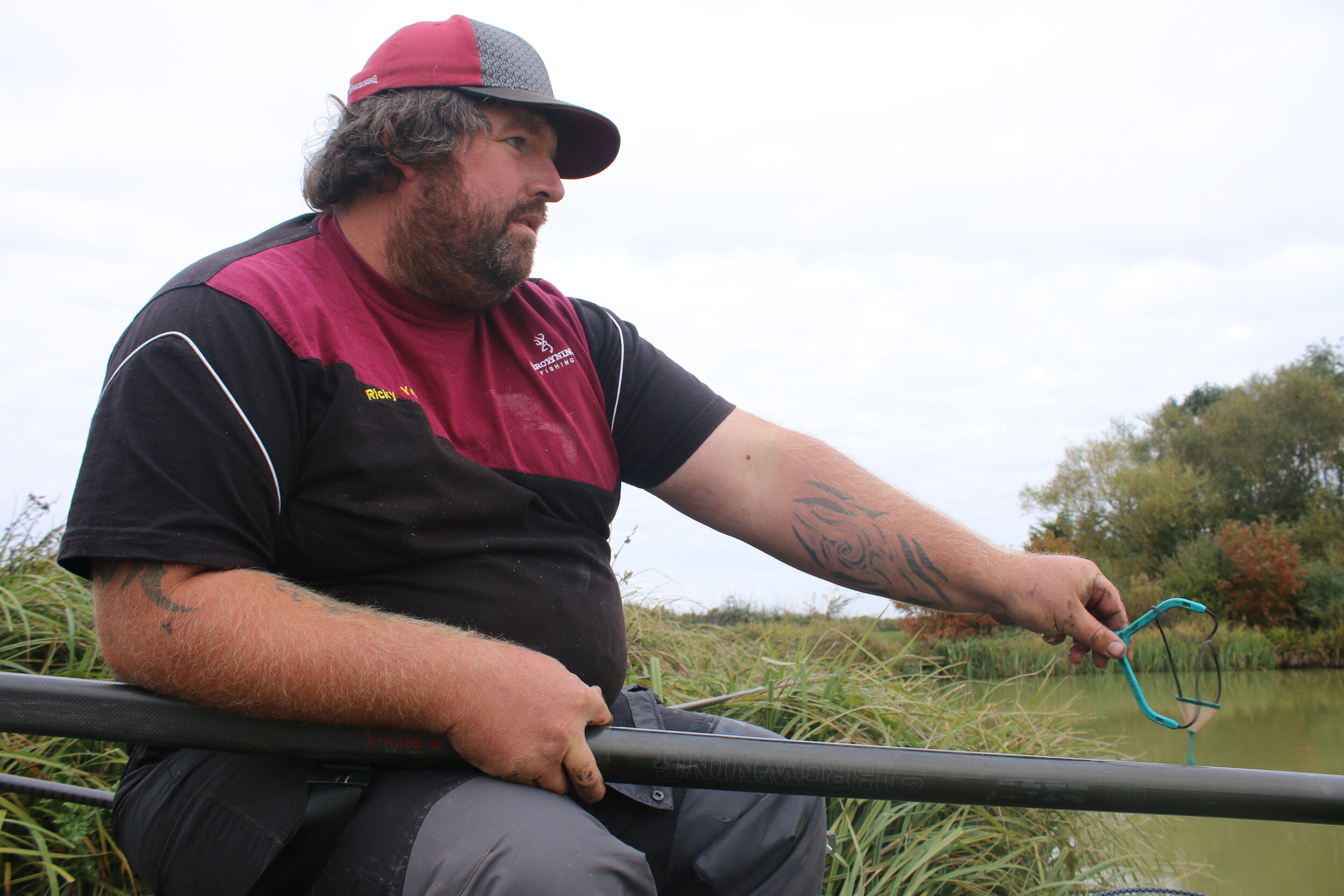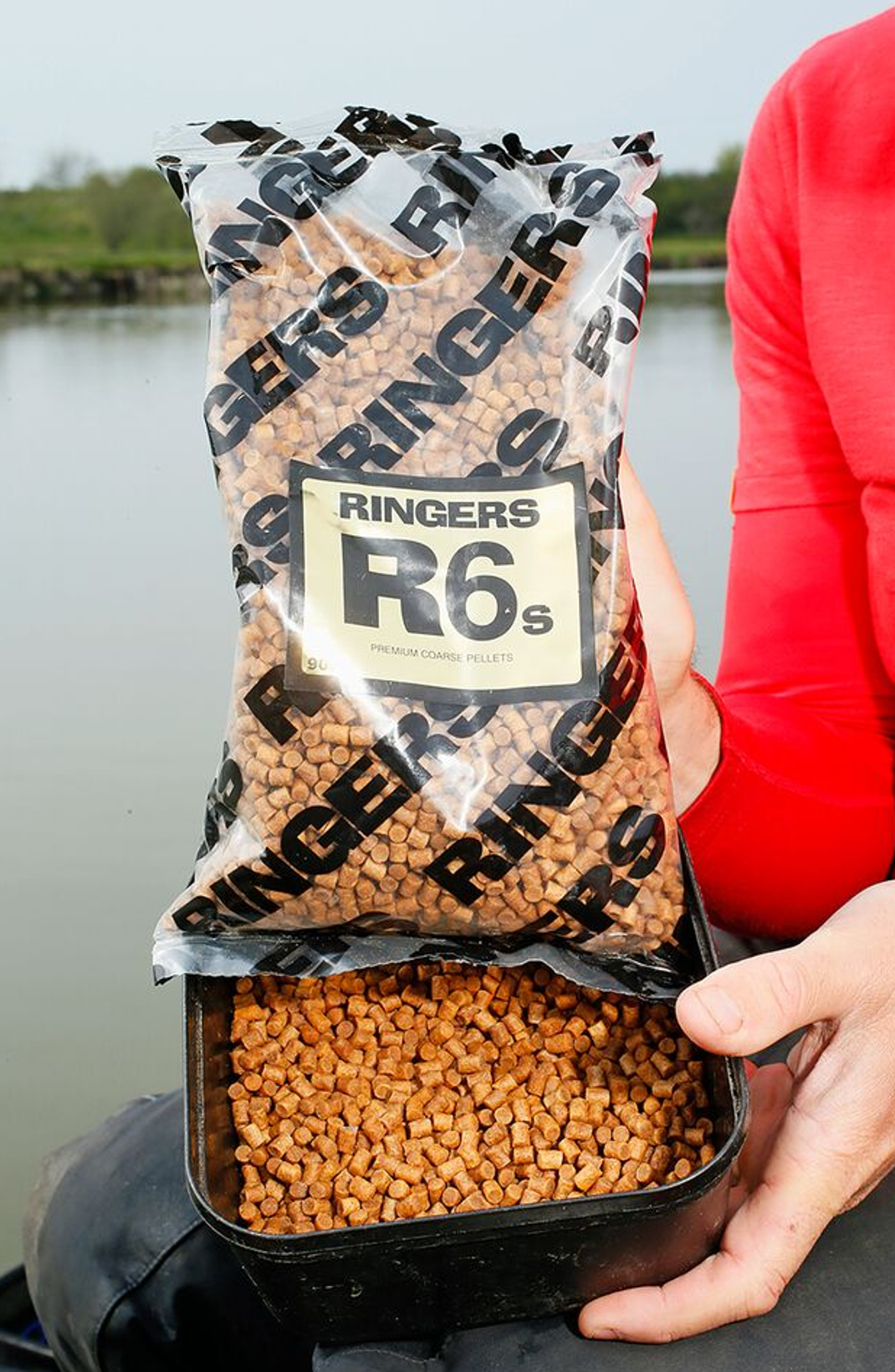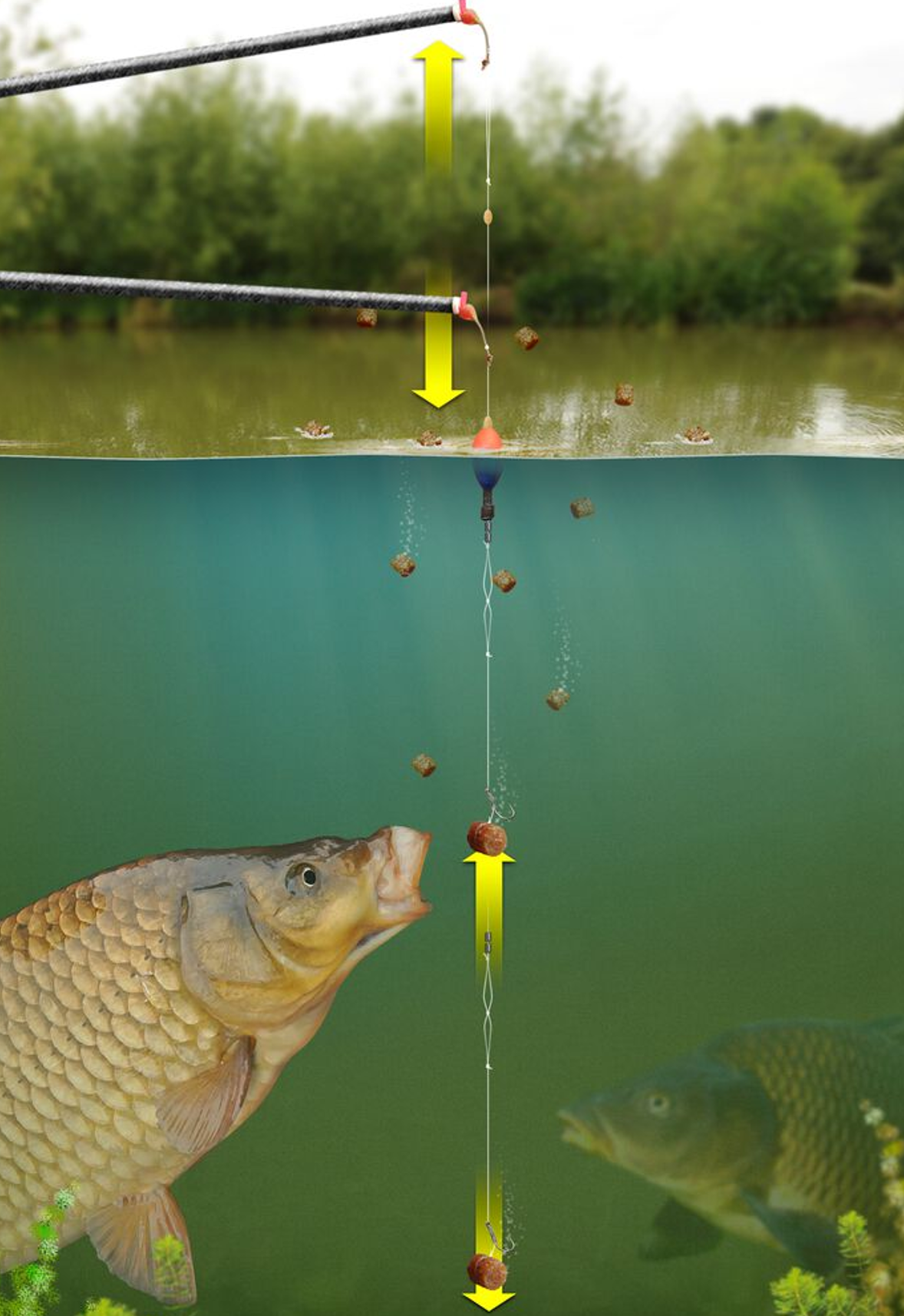Commercial Fishing Tips | Six tips to shallow up for silvers - Ricky Young
As long as the temperatures overnight and in the day stay settled, with no big drops, I’ll put my money on catching a big net of quality silvers by fishing off bottom, sometimes even properly shallow.
Fishing shallow can catch you quality nets of silvers
Here’s some tips to help you do the same…
GO FOR A LIGHT ELASTIC
Even if you hook a rogue carp, you can get it out using light elastic. The Browning Microbore orange grade I use is perfect – soft enough to land roach and skimmers without hook-pulls, but you can land a carp with a side-puller kit.
Big fish can be landed on light elastics
GREAT PRESENTATION
A light float allows the bait to fall through the water slowly and find the bigger roach. A homemade slim-bodied 0.2g float taking seven or eight No10 shot strung in the bottom half of the rig will get the job done.
A light float encourages a slow fall of the hookbait through the water
USE GROUNDBAIT
I’ll pot in three large balls of groundbait. This attracts and focuses the fish in a spot over which I can then fire casters. My mix is a split of Browning Black Roach, Quick Skimmer and Formula Fish.
Pot in groundbait to draw the fish in from the off
SWITCH TO MAGGOTS
Casters are always my choice for silverfish, but they can sometimes be too selective. Maggots are the great fall-back bait that can get a peg going again when it seems to have slowed up.
Maggots are a great change bait if bites slow down on casters
FEED A SECOND LINE
You won’t plunder one line all day, as the fish will eventually back off. This is where I have a second swim on the go, to target big roach and skimmers. I put this in at 6m but off to one side, and will only fish here on the bottom.
Feed another line to with to when bites slow up
FEED WITH A CATTY
While the weather remains mild, the fish will still be active. To catch off bottom, you need to keep loosefeeding casters. The regime is 10 casters fired in every time I drop the rig in and every 60 seconds when I’m fishing the close-in line.
Keep the feed going in
Commercial Fishing Tips | Time to catch them 'deep shallow' - Steve Ringer
October may be just around the corner, but you can still catch carp shallow – albeit with a slightly different twist.
The days of setting the rig a foot deep and blasting bait around the float are over for another year, although fish will still be feeding well off the bottom.
So how do you catch them then? By adopting a ‘deep shallow’ approach, you’ll still pick them off. This involves fishing at half depth so, in 8ft of water, you’ll set the rig 4ft deep. Finding the fish is key and involves a lot of adjustments to your depth until you locate the carp.
That’s not to say you won’t still catch fish a foot deep and, on very warm days, carp will quickly come up in the water. That’s something that I always bear in mind at this time of year. I’ll always have a very shallow rig set up and ready to go.
Normally, though, I’ll begin fishing deep shallow and work my way in from there.
If I catch, great, if I am getting line bites, this tells me the fish are shallower and I need to make a change.
Shallow fishing with a twist!
How deep to fish?
Unless it is a hot day, the fish will be anywhere from 2ft to 4ft deep in a swim with 8ft of water. Begin at half depth using a loosely strung bulk with shot 3ins apart in the bottom half of the rig. This creates a slow fall of the hookbait but gets it down to the fish relatively quickly.
Begin at half depth
Create some noise
If I see fish moving close to the surface, I reach for a 1ft deep rig. In this situation, it can pay to stop feeding totally and either slap the float and hookbait on the water a few times, or tap the pole-tip in the water to create a noise that fish will come to investigate.
Create some noise to draw in the fish without feed
Constant feeding
Feeding should be regular, even if you aren’t catching. You need a stream of bait falling through the swim to pull fish into the peg. Six to eight 6mm pellets is enough, but if bites slacken off, I may reduce the number of pellets. If there are lots of fish about I’ll feed more.
Feed little and often
Which float to use
A classic bristle-stopped pattern such as the Guru AR or Pinger is better than a dibber, but used in a small size, around 4x10 or 4x12. Depth adjustments happen if I’m getting bites but not hooking fish. Shallow up a few inches and eventually you’ll find the fish!
Use a small sized classic float like the Guru AR
Commercial Fishing Tips | Pellet Wag tricks for autumn - Matt Bingham
The days are growing shorter, but if you think it’s time to put the pellet waggler away, think again!
It works wonders during the heat of summer but I’m in no doubt that it should play a part in your armoury right now.
The appetites of the carp in your local water may have reduced a touch, but they are by no means in hibernation. They’re also sitting well off the deck and more than willing to have a munch just a few feet below the surface.
Here are six tips to get the most out of the method NOW!
Try different floats
Use a 4g-6g foam version, switching to a balsa float in a wind to maintain accuracy.
Cast around the feed
If bites drop off, feed as before but cast beyond or to the side for fish that have backed off.
Adjust the depth
No bites in 10 casts? Adjust your rig 6ins either way and carry on till you contact fish.
Locking the float
Line stops, unlike shot, don’t damage your line. No shot are needed beneath the float.
Turn to light line
A 5lb mainline to a 0.17mm hooklength and size 12 Guru QM1 hook will usually suffice.
Stand-out hookbait
If bites cease, try an alternative hookbait such as a dyed 8mm pellet before changing depth.
Commercial Fishing Tips | How to set up a Jigga rig - Paul Yates
It’s simple to set a Jigga rig up – the hard work comes in finding the depth the fish are feeding at and ensuring that the hookbait is lowered directly downwards through the water. It’s a great summer method for carp and F1s feeding shallow, and allows you to cover more depth of water.
The Jigga float
I use thick 0.18mm line so that it can slide through the body of the Jigga float easily, letting the hookbait fall directly down. Around 2ft from the pole-tip I fix a float stop to the line, thread the float on and pop another stop in place around 12ins below this. Around four No8 shot are then bulked under this stop.
The plan is to set the two float stops apart at the depth you think the fish will be at. When the float hits the top stop, the bait will be at full depth. Once you lift the pole-tip slowly, the float will stay in the water, but the line will pass through, pulling the hookbait up in the water until it hits that bottom stop.
The Jigga rig
Match Fishing Tips - How to compete with the jigger - Robbie Griffiths
WHETHER you like it or not, the jigger can be a devastating method on its day, as it allows you to catch fish at different depths and its self-hooking properties mean you don’t miss any bites.
That said, you can certainly still compete using normal rigs, but you need to have several of them set up to find the exact depth the fish want to feed at on the day.
Once you find the right depth, a fixed rig can be even more effective than a jigger because you are fishing in the ‘feeding zone’ at all times.
A great tip is to have a really short line between your pole-tip and float, if fishery rules and conditions allow it, as this will help you to turn every bite into a fish in the net.
The jigger can be a devastating method





















